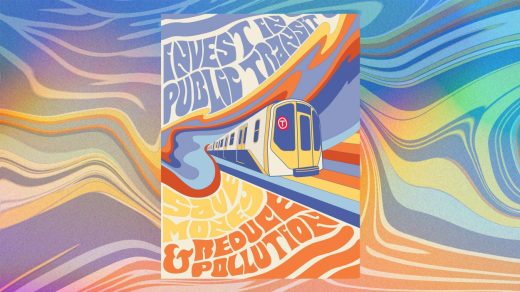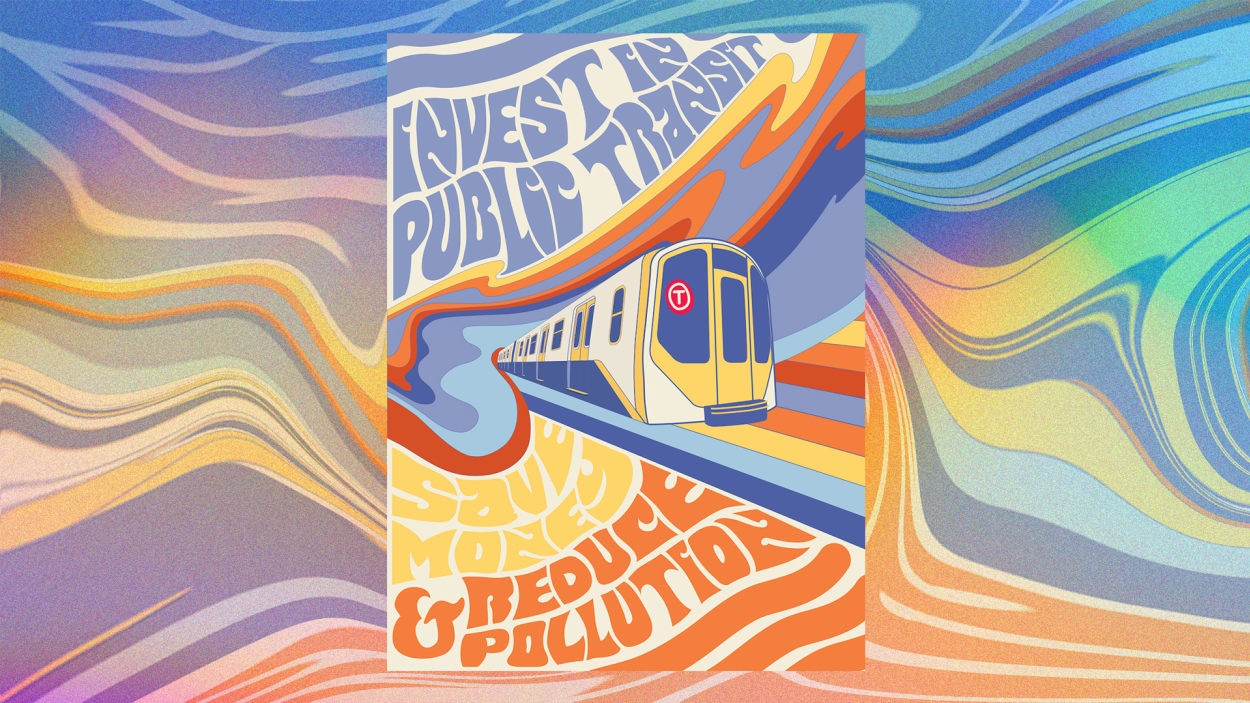What climate PSA posters would look like if they took a hit of acid
Climate change isn’t sexy, but these posters are.
American artist Hannah Rothstein has created a series titled Goodstock: Putting Climate Solutions Center Stage, in which each piece depicts a different solution to climate change, like increasing renewable energy, investing in public transport, or eliminating food waste. The solutions are mostly pulled from Project Drawdown, which shares information and insight on climate solutions.
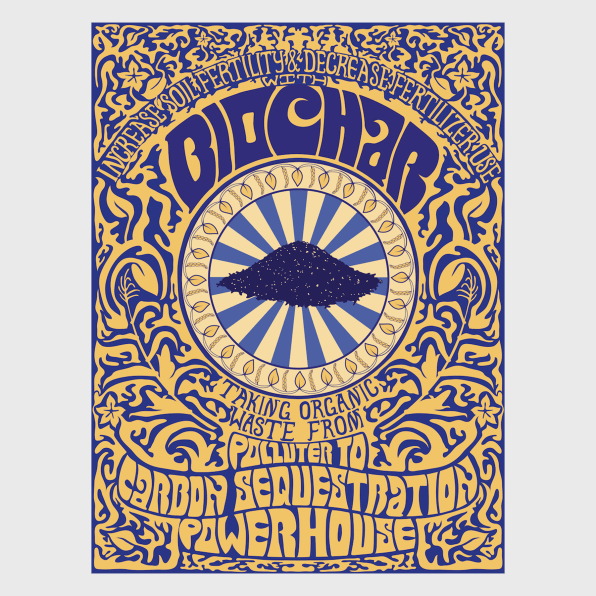
The artworks, meanwhile, are inspired by the look and feel of 1960s rock posters: think swirling lines, vibrant colors, distorted typography, and even direct references to music posters with words like starring—except in Rothstein’s version, the main act is “Eliminate Food Waste” and the supporting acts are “Universal Compost” and “Ugly Produce.” (Prints are available for sale on Rothstein’s website, starting at $60 for a 9-by-12.)
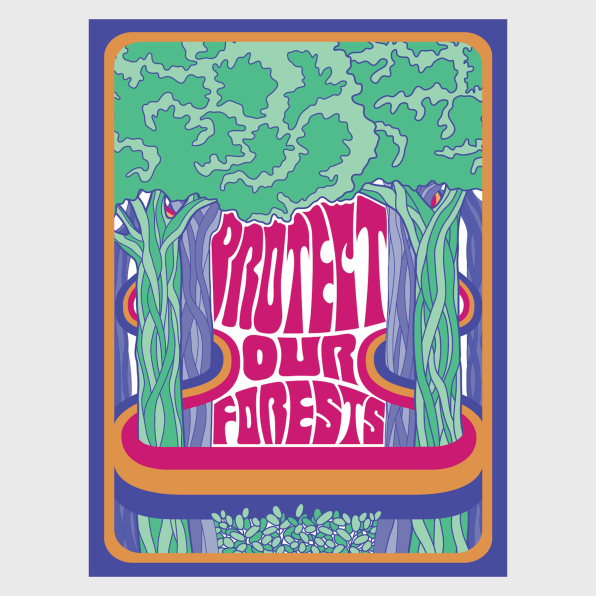
“There’s a whole movement associated with that aesthetic and that music, and in a similar way, I think we need a whole movement driving climate solutions,” says Rothstein, who came up with the idea while staring at music posters on the walls of a lounge area at Google, where she was working on a contract gig. “People look at these posters and idolize them, and I thought, Oh, I could apply that to climate solutions,” she says.
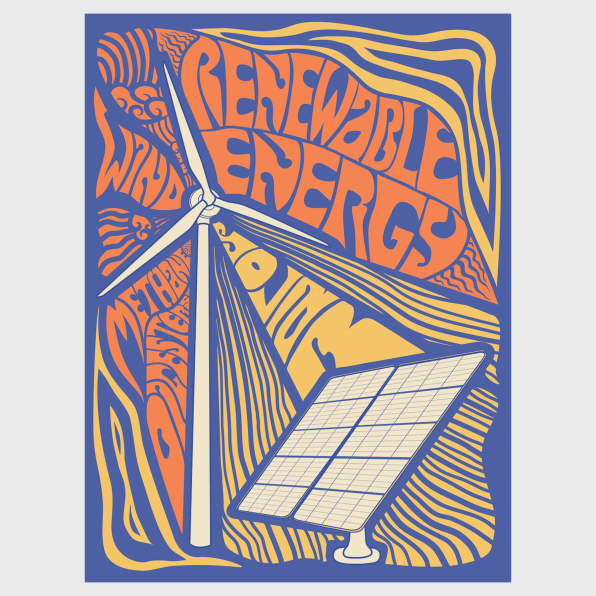
For her “Public Transport” poster, Rothstein borrowed the swirls from a 1970s sci-fi book cover inspired by the Davie Bowie song “Moonage Daydream,” then added a train punching through the swirls. In her ‘Biochar’ poster, she promotes the virtues of organic agriculture by employing the kinds of vegetal patterns she had seen in various posters from that era.
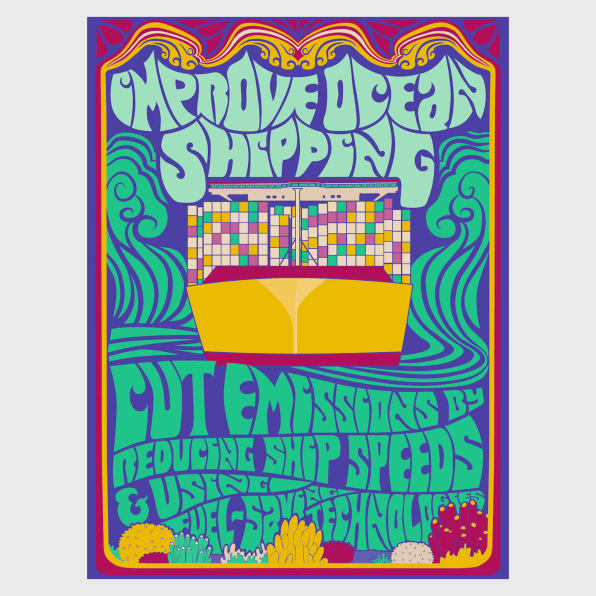
The entire series appears plucked from the wall of a music venue during the psychedelic heyday, with lots of warps, curves, and concentric lines. Most of the posters come with taglines like “Ban HFCs” (highly potent greenhouse gases often used in fridges and air conditioners) or “Cut Emissions by Reducing Ship Speeds.” But Rothstein’s use of playful typography helps soften the blow so that the messages read less like guilt-tripping lectures and more like rallying cries.
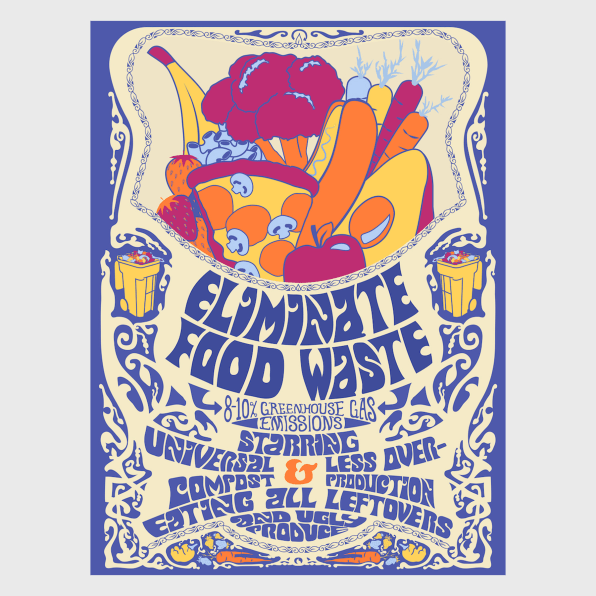
Rothstein is no stranger to climate activism. In her series The Cost of Denial, she highlighted the campaign finances of 10 climate-denying politicians in the style of Soviet-era propaganda posters. More recently, she reimagined Works Progress Administration posters advertising U.S. National Parks in a world that is plagued by drought, floods, and fires. And in her viral 50 States of Change—released in collaboration with Greenpeace USA—she hijacked classic state postcards with depictions of man-made ecological disasters like melting glaciers in Alaska, wildfires in California, and floods in Georgia, Florida, and North Carolina.
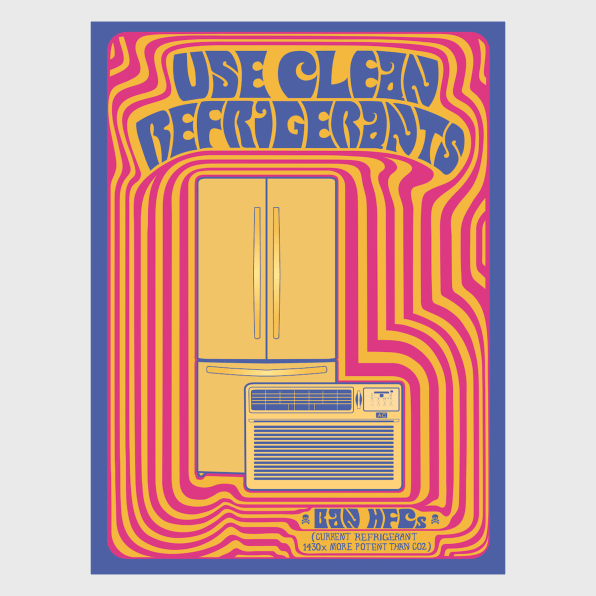
But the tone of her Goodstock series is different. “I do think fear can be a motivator but I was also interested in looking at how to positively motivate people,” she says. “I do believe that hope and feeling like you can make a change in the world are important for taking action.”
(24)

